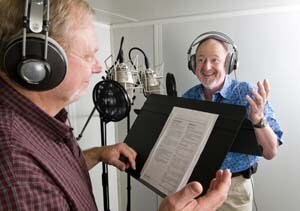Recent Episodes

The strain of COVID-nineteen circulating now is not the one that we began the pandemic with. Each time the virus infects someone, it can mutate. But humans are not its only reservoirs. Scientists are now searching for the virus in other animals. For example, in two thousand twenty, the virus was spreading in Ohio’s white-tailed deer. More than ten percent sampled had it and the virus was related to the strain circulating in people at the time. Since deer are solitary, we don’t know how the virus passed from human to deer.
What’s concerning is that sequencing of the genomes of the deer viruses showed it was mutating quickly. This can happen after an interspecies jump as it adapts to a new host. This also means new variants of the COVID-nineteen virus are emerging and can make a jump back into humans, starting a new epidemic.
The same study has documented that COVID-nineteen has spread to more than fifty animal species, including wild mice, minks, swan, leopard, raccoon, lions, tigers, ground hogs, squirrels, armadillos, and even rhinos and hippos. Some of these animals may be dead-end hosts with the virus never being transmitted between animals. Others could amplify and mutate the virus. Scientists haven’t studied whether some of these animals can transmit viruses to us humans.
This study is the type of public health surveillance and monitoring essential to prepare us and alert us to future threats.
More Information
Virus gone wild
An ambitious U.S. project aims to sample more than 50 animal species to clarify how the COVID-19 virus moves between people and wildlife
Transmission of SARS-CoV-2 in free-ranging white-tailed deer in the United States
SARS-CoV-2 is a zoonotic virus with documented bi-directional transmission between people and animals. Transmission of SARS-CoV-2 from humans to free-ranging white-tailed deer (Odocoileus virginianus) poses a unique public health risk due to the potential for reservoir establishment where variants may persist and evolve.
Wikipedia: List of animals that can get SARS-CoV-2
Dozens of captive animal species have been found infected or proven able to be experimentally infected with SARS-CoV-2, the virus that causes COVID-19. The virus has also been found in over a dozen wild animal species.

Medicine...
Medicine is constantly advancing – that is a great thing about life in the 21st century. But it doesn’t just happen. Dedicated biomedical scientists are making discoveries that translate into those new medical advances.
Biomedical science is broad, encompassing everything from social science to microbiology, biochemistry, epidemiology, to structural biology and bioinformatics to name just a few areas. And, it can involve basic fundamental biology, the use of AI and chemistry to clinical studies that evaluate new medicines in patients.
No matter the research focus, the goal is always the same, to advance human health. It may take a few months, a few years or for fundamental science, a few decades. Few people make the connection that biomedical science is medicine and that biomedical scientists are working today on the medicine of tomorrow. Our weekly 500-word newspaper columns and 2-minute radio shows and podcasts provide insights into a broad range of biomedical science topics.
Medical Discovery News is dedicated to explaining discoveries in biomedical research and their promise for the future of medicine.





